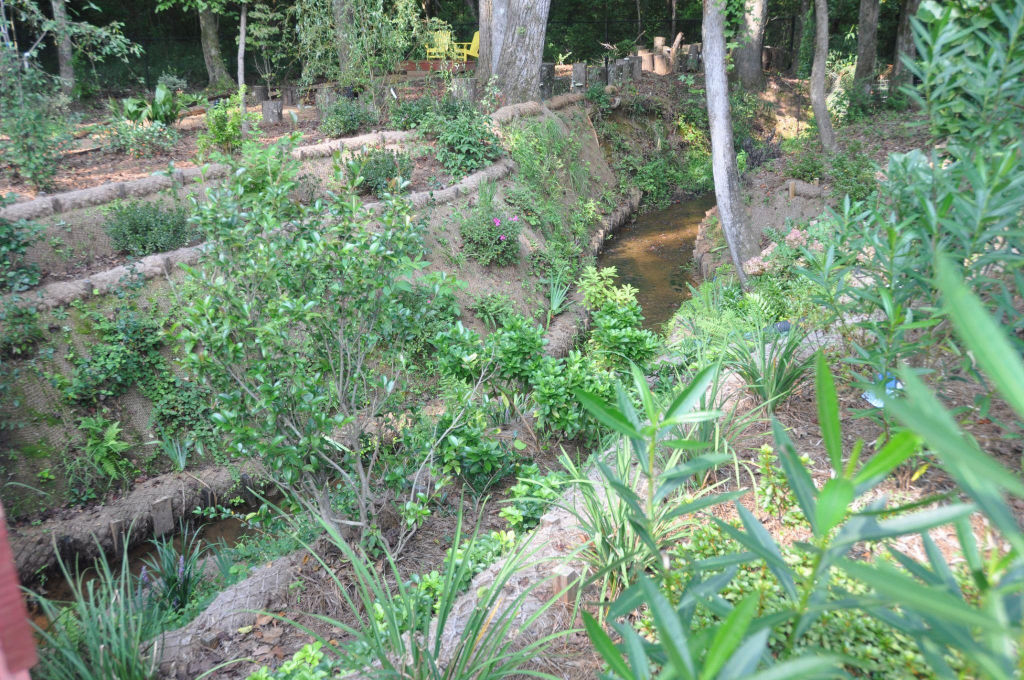
Streambank erosion is a common problem that can lead to the loss of valuable land and damage to aquatic habitats. One of the most effective ways to prevent erosion and promote vegetation growth in riparian zones is through BioD-Mat woven bristle coir blankets. These eco-friendly, natural products help stabilize streambanks, restore natural vegetation, and improve water quality. Here’s how you can implement streambank restoration using these products.
Step 1: Assess the Site
Before starting the restoration process, it’s important to assess the condition of the streambank. Consider factors like the extent of erosion, soil type, and existing vegetation. For severely eroded areas, you might need additional streambank restoration products such as BioD-Roll densely packed coir logs or BioD-Watl coir sediment control wattles to stabilize the soil before applying the coir blanket.
Step 2: Prepare the Streambank
Prepare the streambank by clearing any debris, rocks, or loose soil that could interfere with the installation of the BioD-Mat woven bristle coir blanket. If there is significant erosion, you may need to use soil erosion control products like BioD-Block fabric attached coir block systems to shore up the bank and prevent further soil loss.
Step 3: Install the BioD-Mat Coir Blanket
Once the site is prepped, it’s time to install the BioD-Mat woven bristle coir blanket. Lay the blanket evenly along the eroded area, ensuring it covers the entire soil surface. Overlap adjacent sections by at least six inches to ensure full coverage. Secure the blanket with stakes, staples, or other anchoring tools to prevent it from shifting in the flow of water. If the area is particularly steep, you can use Coir erosion control blankets to add extra protection.

Step 4: Add Additional Support if Needed
In areas where the BioD-Mat alone may not provide enough structural support, consider adding BioD-Roll densely packed coir logs or Coir sediment control wattles. These products can be placed along the bank or stacked in strategic areas to further enhance erosion control. Additionally, the BioD-Block fabric attached coir block system can be used at high-risk points to reinforce the bank and protect the blanket from being displaced.
Step 5: Plant Vegetation
Once the BioD-Mat woven bristle coir blanket is installed, it’s time to promote vegetation growth. The coir blanket creates an ideal environment for plant roots, as it retains moisture and provides organic material as it breaks down. Plant native grasses, shrubs, or trees that are suited for streambank environments. For added support, use BioD-Pillow coir revegetation pillows in areas where plant growth is needed.
Step 6: Monitor and Maintain
After installation, regular monitoring is essential to ensure the success of the restoration. Check for any signs of erosion or displacement of the coir blanket. As the vegetation grows, it will gradually take over the role of stabilizing the soil. However, if invasive weeds begin to grow, consider using BioD-Weedmat natural weed control mat to prevent unwanted plants from interfering with restoration efforts.
RoLanka’s Custom Solutions for Streambank Restoration
RoLanka provides high-quality soil bioengineering products tailored to your specific streambank restoration needs. Their range of BioD-Mat woven bristle coir blankets and other streambank restoration products are designed to support long-term erosion control and enhance vegetation growth. For professional-grade solutions and expert guidance, contact RoLanka today to learn more about their custom products and services.
